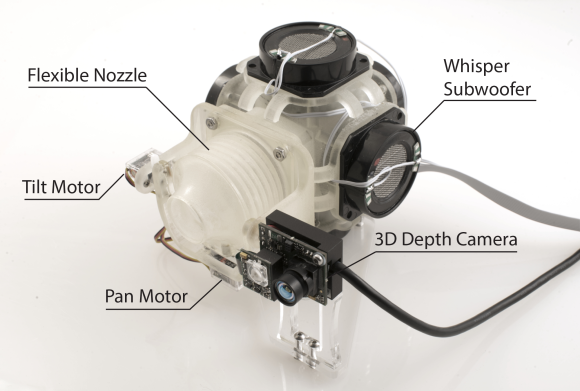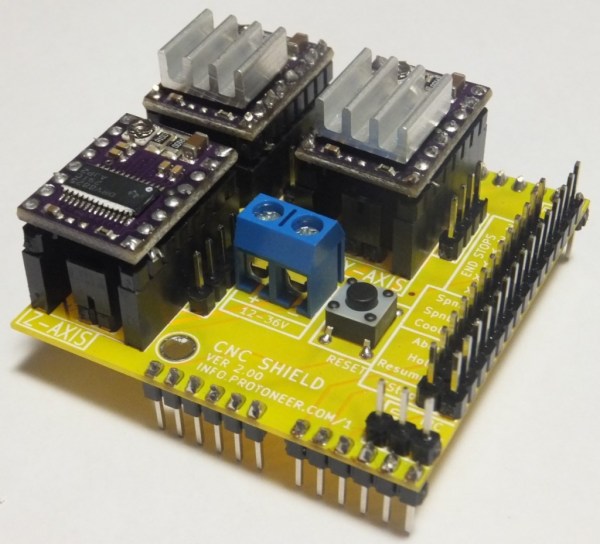
This little device is about the size of a webcam, and it perches on top of your computer monitor in much the same way. It’s Disney’s solution to haptic feedback for gestural input. That is to say, wave your hands in the air to control a computer, and this will give you some sense of actually touching the virtual objects.
The thing shoots toroids of air at the user. We thought the best example of how this is used is the soccer ball demo in the video. A game is being played where virtual soccer balls are launched toward the user. The rig shoots out a puff of air to go along with each ball. When you get your hand in the right place you’ll feel the vortex of air and know you’ve made contact with the virtual object.
On the hardware side this is just begging to be recreated in your basement. What we have here is a 3D printed enclosure that has six sides. Five of them have speaker elements that create pressure waves when given an electrical signal. When coordinated they cause a perfect ring vortex (think cigar smoke ring) to shoot out the flexible nozzle which can be aimed thanks to a gimbal setup. Of course the element that makes it interactive is a 3D camera, which could be a Kinect or Leap Motion when built in the home workshop.
Continue reading “Disney Prototype Adds Haptic Feedback To Gestural Interface”















